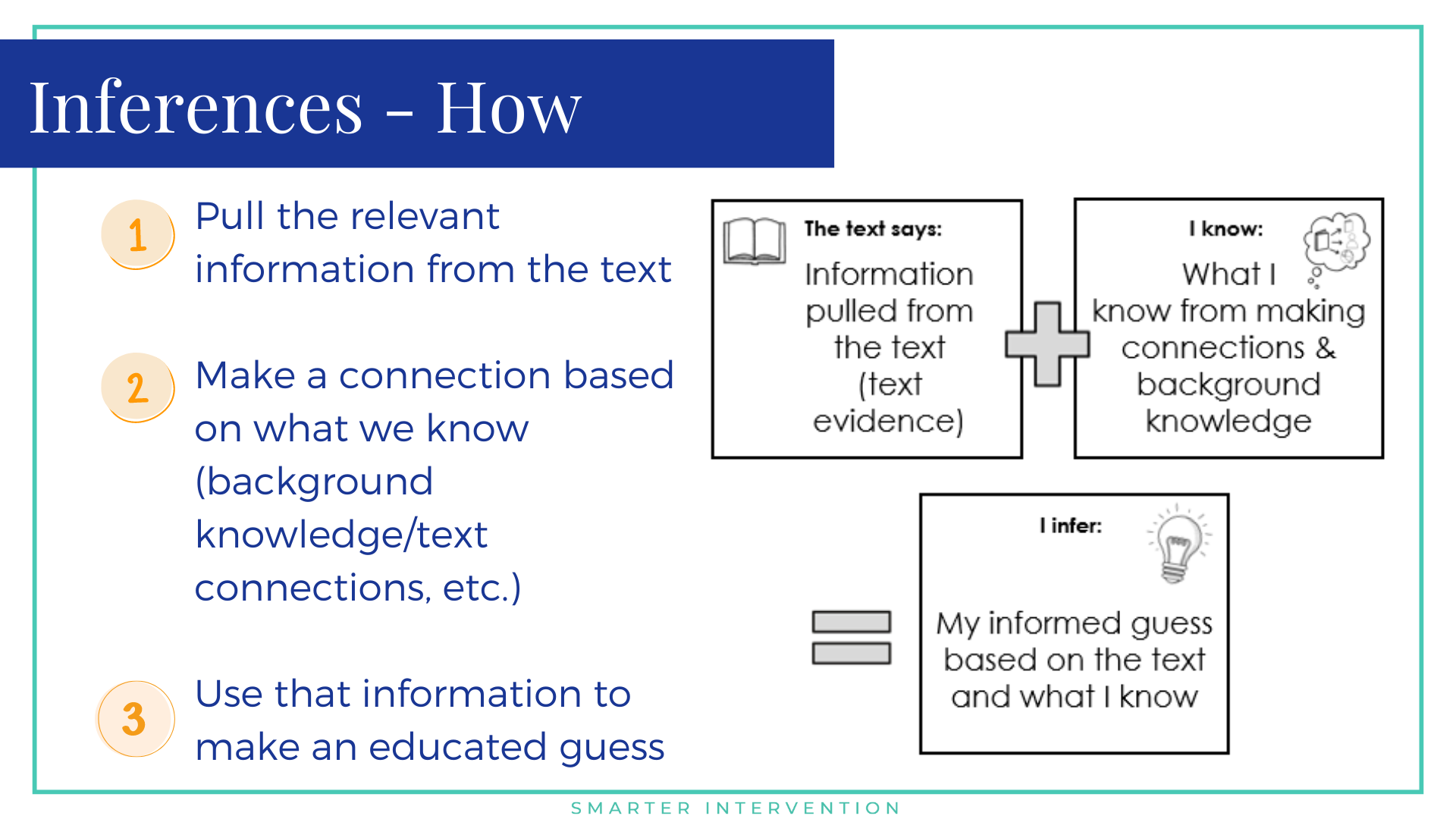Teaching Reading Comprehension - Strategies for Inferences & Predictions
Do your students ever struggle to make appropriate inferences or predictions from a story or passage they've just heard or read?
If so, not to worry, this is a high-level concept! And, we’re here to share our explicit teaching strategy to help students begin to “take leaps” with information by making inferences and predictions.
If you’ve read our other Reading Comprehension Strategies blogs, you may already know that when we teach comprehension, we teach the skills in a spiral fashion. We start with a big picture overview for students so they understand each of the 5 levels of comprehension and then we break it down and focus on each of the individual levels and strategies with each level.
We always follow a three-part process for reading comprehension. Pre-reading, during reading, and after reading. In pre-reading, we preview the content and generate background knowledge. During reading, we are looking out for key information. And after reading we are reflecting on what we've read.
Why are inferences important?
Not everything we are supposed to take away from a passage/text is explicitly stated. We often need to be able to “read between the lines” or “make a leap” with the information to fully understand it or to do something meaningful with the information. An inference is essentially an educated guess in response to a question that is not explicitly in the text. While referring back to text can be a helpful strategy for students as they work to comprehend information or answer comprehension questions, there are many instances in which we need to bring something to the text as a reader. If we need to bring something to the text, it is likely that we are making a connection, inference, prediction, or analysis.
To make an inference we need -
Information from the text: This is the information that could be cited or that comes directly from the text as text evidence.
Background Information: This is the information that comes from our world knowledge, experiences, other texts we’ve read or information we’ve heard that we can connect to the information.
How do I help students make an inference?
Students will want to follow a three-step process to make an inference.
Step 1 - Pull the relevant information from the text
Step 2 - Make a connection based on what they know from background knowledge, text connections, etc.)
Step 3 - Use that information to make an educated guess
We like to use visuals and graphic organizers wherever possible!
For example, if students were reading a passage about the impact of an earthquake and then were asked the question, “How might an earthquake start a fire?” They could follow the three-step process:
The text said that earthquakes make the ground shift and shake.
I know that when the ground shakes, things fall over or break.
I infer that earthquakes might start a fire because it could knock things over like power lines, gas tanks, candles, etc. that could start a fire.
This is also a great way for students to begin working on citations and recognizing the difference between information provided directly and the information we are assuming (making educated guesses about).
Now the process is very similar as we look toward making predictions.
Why are predictions important?
Predictions allow us to take the information we have and make guesses about what might happen in the future or what might come next in a logical order/sequence, even when we don’t explicitly have that information. A prediction is essentially an educated guess about something that will happen in the future.
To make a prediction we need -
Text + Background Knowledge (as we needed to make an inference)
+ Ability to Infer: using the information we have and connections we make to make an informed or educated guess
+ Ability to Sequence or Understand Cause & Effect: we need to be able to sequence events or understand a possible cause and effect relationship that has not yet occurred.
How do I help students make a prediction?
Students will want to follow the same three-step process to make a prediction.
Step 1 - Pull the relevant information from the text
Step 2 - Make a connection based on what they know from background knowledge, text connections, etc.)
Step 3 - Use that information to make an educated guess about the future
If they aren’t able to “see” or project into the future, it can be helpful to take a step back and work on cause and effect relationships.
You can always start by modeling this process with graphic organizers and the use of visuals to help students make that clear connection. If you’re looking for activities to help support students and their ability to make inferences and predictions, check out our 5CCL Activity Library where you can get access to our favorite activities with scaffolded support to build up these important skills!
For more information about teaching students how to make inferences and predictions, check out this video!








